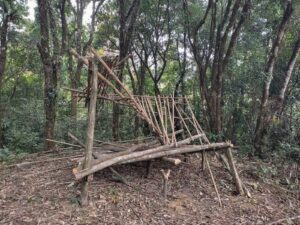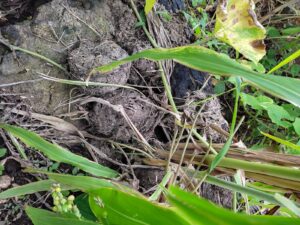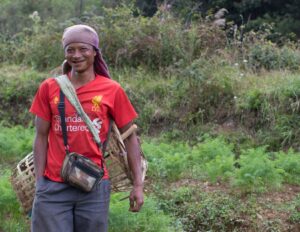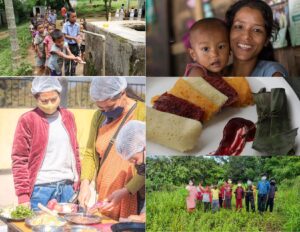Nestled in the West Garo Hills of Meghalaya, Misimagre stands out as a beacon of ecological harmony. This agrarian community thrives on a unique practice – a sustainable form of cultivation known as Jhum. Unlike many other communities using this method, Misimagre is one the last few communities that prioritize long fallow periods, ranging from 5 to over 10 years. This regenerative approach not only nourishes the land and ensures bountiful harvests but also inadvertently fosters peaceful coexistence with wildlife.
Throughout 2023 and the first half of 2024, the Garo Hills faced a surge in elephant sightings and incursions. Farming communities like Mandal Nokwat in East Garo Hills bore the brunt of these invasions, suffering loss of crops and property. Traditional methods like fire and night patrols proved ineffective, forcing residents to turn to alternative means of survival- kitchen gardening. 
Misimagre, however, remained remarkably unscathed. This resilience can be attributed to its vast land area, encompassing a staggering 700 hectares. A significant portion, roughly 400 hectares, is dedicated to a thriving forest – a natural habitat for elephants and other animals. This abundance of space and food sources minimizes the need for elephants to venture outside their territory, minimizing human-animal conflict.
Palenson Ch Marak, a revered elder and custodian farmer in Misimagre, sheds light on the past. “There were far fewer of us back then,” he recalls. “Elephants used to invade our homes, causing damage. We used fire to drive them away, but eventually, they returned to their forests, and we haven’t had such problems since.”
The stark contrast between Misimagre and other communities highlights the critical role of forest conservation. Habitat loss and dwindling food supplies due to deforestation likely compel elephants to venture into human settlements. The Garo Indigenous community, with their deep respect for nature, traditionally avoids uttering the elephant’s name (mongma) and refers to them as mama dal·giparang– “big uncles.” However, with deforestation escalating to make way for plantations, the question remains: will human-elephant conflict become an annual threat?
Misimagre’s story serves as a potent model. By adopting sustainable practices and prioritizing forest conservation, communities can not only secure their livelihoods but also foster peaceful coexistence with wildlife. Can we learn from their wisdom and ensure a future where humans and elephants can share the land in harmony?
This story has been documented as part of the TNC-supported NESFAS’ project “Protection of forests in Meghalaya by adopting participatory, gender-centric, and equitable approaches”





